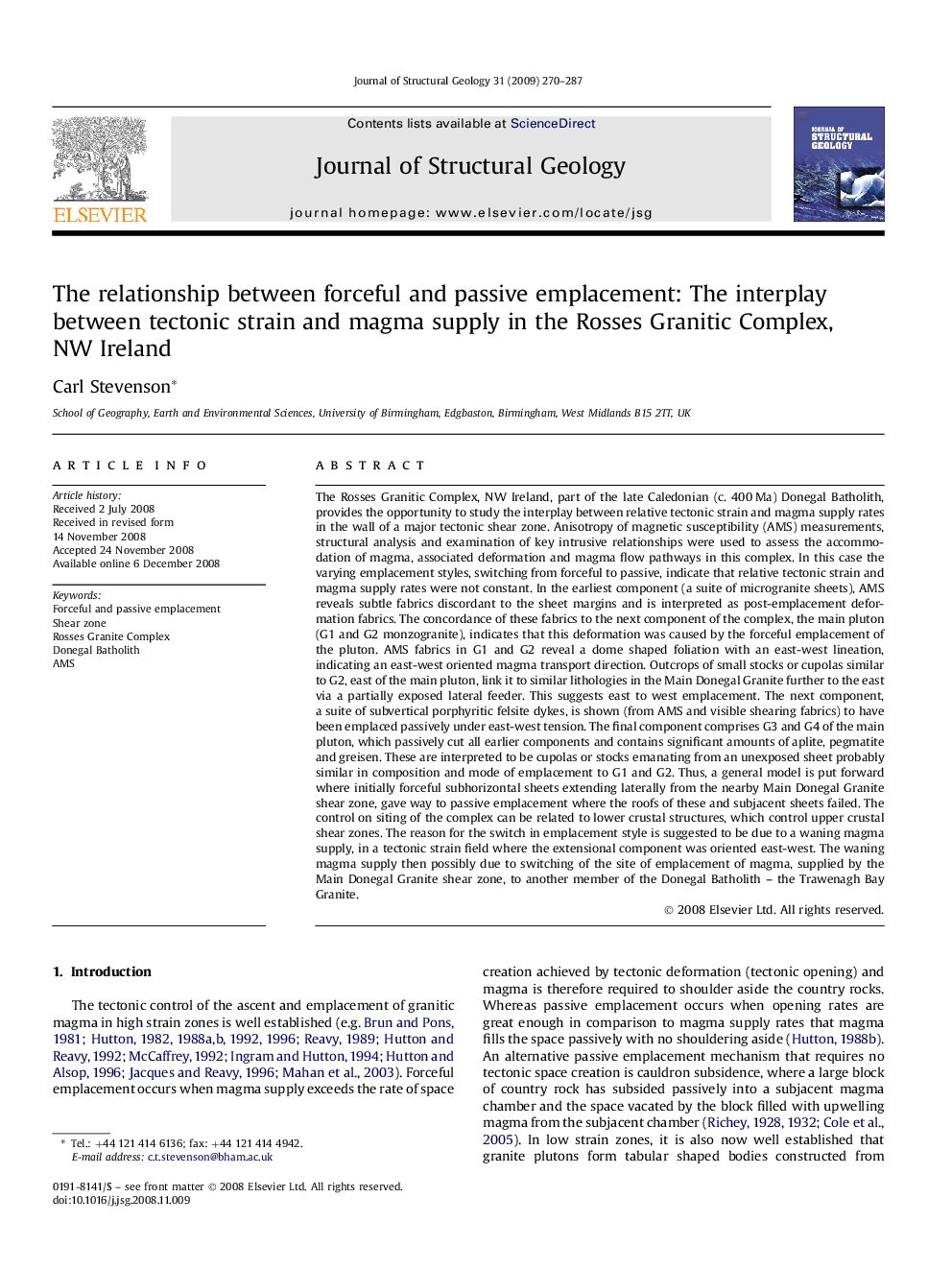| کد مقاله | کد نشریه | سال انتشار | مقاله انگلیسی | نسخه تمام متن |
|---|---|---|---|---|
| 4733942 | 1357061 | 2009 | 18 صفحه PDF | دانلود رایگان |

The Rosses Granitic Complex, NW Ireland, part of the late Caledonian (c. 400 Ma) Donegal Batholith, provides the opportunity to study the interplay between relative tectonic strain and magma supply rates in the wall of a major tectonic shear zone. Anisotropy of magnetic susceptibility (AMS) measurements, structural analysis and examination of key intrusive relationships were used to assess the accommodation of magma, associated deformation and magma flow pathways in this complex. In this case the varying emplacement styles, switching from forceful to passive, indicate that relative tectonic strain and magma supply rates were not constant. In the earliest component (a suite of microgranite sheets), AMS reveals subtle fabrics discordant to the sheet margins and is interpreted as post-emplacement deformation fabrics. The concordance of these fabrics to the next component of the complex, the main pluton (G1 and G2 monzogranite), indicates that this deformation was caused by the forceful emplacement of the pluton. AMS fabrics in G1 and G2 reveal a dome shaped foliation with an east-west lineation, indicating an east-west oriented magma transport direction. Outcrops of small stocks or cupolas similar to G2, east of the main pluton, link it to similar lithologies in the Main Donegal Granite further to the east via a partially exposed lateral feeder. This suggests east to west emplacement. The next component, a suite of subvertical porphyritic felsite dykes, is shown (from AMS and visible shearing fabrics) to have been emplaced passively under east-west tension. The final component comprises G3 and G4 of the main pluton, which passively cut all earlier components and contains significant amounts of aplite, pegmatite and greisen. These are interpreted to be cupolas or stocks emanating from an unexposed sheet probably similar in composition and mode of emplacement to G1 and G2. Thus, a general model is put forward where initially forceful subhorizontal sheets extending laterally from the nearby Main Donegal Granite shear zone, gave way to passive emplacement where the roofs of these and subjacent sheets failed. The control on siting of the complex can be related to lower crustal structures, which control upper crustal shear zones. The reason for the switch in emplacement style is suggested to be due to a waning magma supply, in a tectonic strain field where the extensional component was oriented east-west. The waning magma supply then possibly due to switching of the site of emplacement of magma, supplied by the Main Donegal Granite shear zone, to another member of the Donegal Batholith – the Trawenagh Bay Granite.
Journal: Journal of Structural Geology - Volume 31, Issue 3, March 2009, Pages 270–287